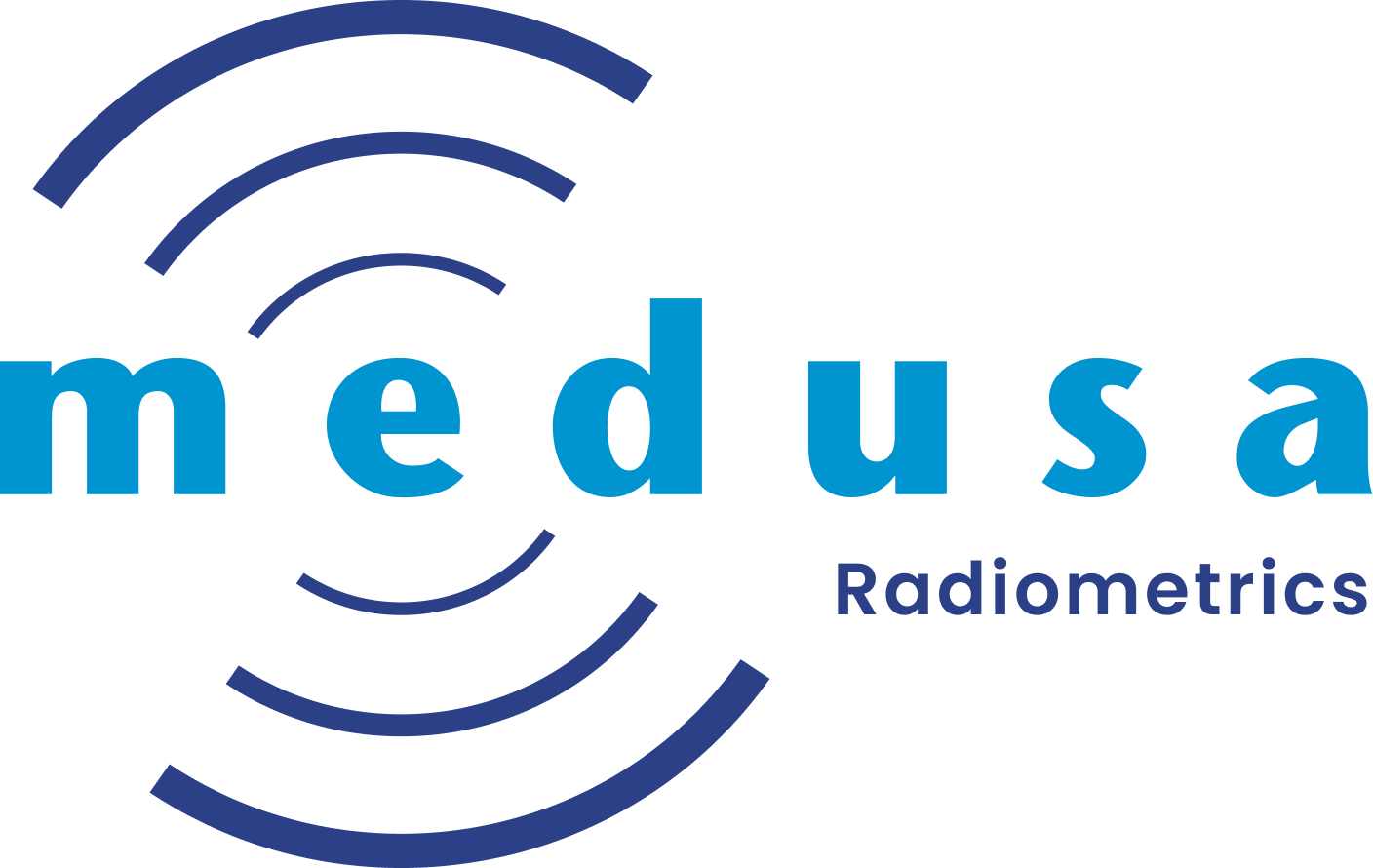Safety note on working with the RhoC5
Working principle of the RhoC5
The RhoC5 density meter measures the density of the soil by using a radioactive 22Na source. This isotope emits gamma radiation into the soil, and the intensity and spectral shape of the backscattered gamma-rays are used to derive the density of the soil. The relation between the backscattered gamma-rays and the soil density is determined by using Monte-Carlo simulations, soil composition models and calibration measurements.
The radioactive source in the RhoC5 has an activity below the exemption value defined by the European Atomic Energy Community1 and is therefore “exempt” and no permit is required to operate and store the device.
Exempt means that the radioactive source is not subject to certain regulations, restrictions, or requirements that would normally apply to radioactive materials. The source is considered to have such a low level of radioactivity that it does not pose a significant health or safety risk, and therefore, does not require strict regulatory control.
It is considered safe to work with when using the recommended working procedures of operating the RhoC5.
Nevertheless, it is always important to keep exposure to any source to a minimum. The ALARA principle can be used for this, which stands for As Low As Reasonably Achievable. We advise to reduce the proximity of the source as much as possible. This means storing the device at a distance from people and using shielding, such as a wall, when possible. Try to reduce the time in proximity to the RhoC5. When preparing the next measurement, leave the RhoC5 pushed down into the previous borehole. The borehole will shield the radiation and prevent exposure.
Location of source in device
The radioactive source is located near the bottom of the aluminum tube, just above the moisture sensor in the black nylon housing. The arrow in the picture below marks this location. This source is embedded in a circular disk, which is secured in a casing that is secured in the tube.

Source specifications
Isotope | 22Na |
|---|---|
Half-life (T1/2) | 2.6 years |
Radiation | Gamma – 1275 keV |
Gamma Constant | 1.34 mR/hr per mCi @ 1.0 meter |
Specific activity at production | 1.0 MBq (28.36 µCi) |
General Precautions
The source present in the RhoC5 density meter is below the exemption value. However, the following precautions are advised:
Maintain your occupational exposure to radiation As Low As Reasonably Achievable (ALARA). This can be achieved by maintaining a normal working distance between the source and the operator.
Ensure all persons handling the RhoC5 are aware of the sensor's working principles and understand that there is a radioactive source located within the device.
In the unlikely event that the sensor comes apart and the circular disk containing the radioactive source is removed from the sensor's housing, it is crucial that the source is not lost. The disk in which the source is embedded is safe to handle from the sides and should be placed in a container, preferably a heavy container made of material that shields gamma rays from the environment, such as metal. DO NOT PLACE THE RADIOACTIVE SOURCE CLOSE TO THE BODY, for example, in a pocket. Contact Medusa Radiometrics immediately.
If there are any questions regarding radiation safety or the use of radioactive materials, please get in touch with Medusa Radiometrics.
Shelf life and Disposal
Due to decay, the activity of the source will reduce over time. This is a physical property independent of whether the RhoC5 is being used. A lower source activity will result in a measurement taking longer to complete. The 22Na source has a half-life of 2.6 years, meaning that after five years, almost two half-life periods have passed, and a quarter of the original activity is left. Since the measurement relies on scattered gamma-rays, the measurement time for acquiring a density reading increases when the source activity decreases. After five years, the 22Na source has to be replaced for the device to continue giving reliable readings.
After these five years, the source in the RhoC5 sensor has to replaced and therefore the sensor should be shipped to the office of Medusa Radiometrics. Here the 22Na source is removed from the device and the 22Na source(s) will be disposed off in accordance with the legal regulations. When the source is replaced, the sensor can be used for another five years.
1 Council Directive 2013/59/Euratom
(https://eur-lex.europa.eu/eli/dir/2013/59/oj/eng )
2 Health Physics & Radiological Health Handbook, 3rd Ed. [Baltimore, MD; Williams & Wilkins, 1998], p. 6-9
